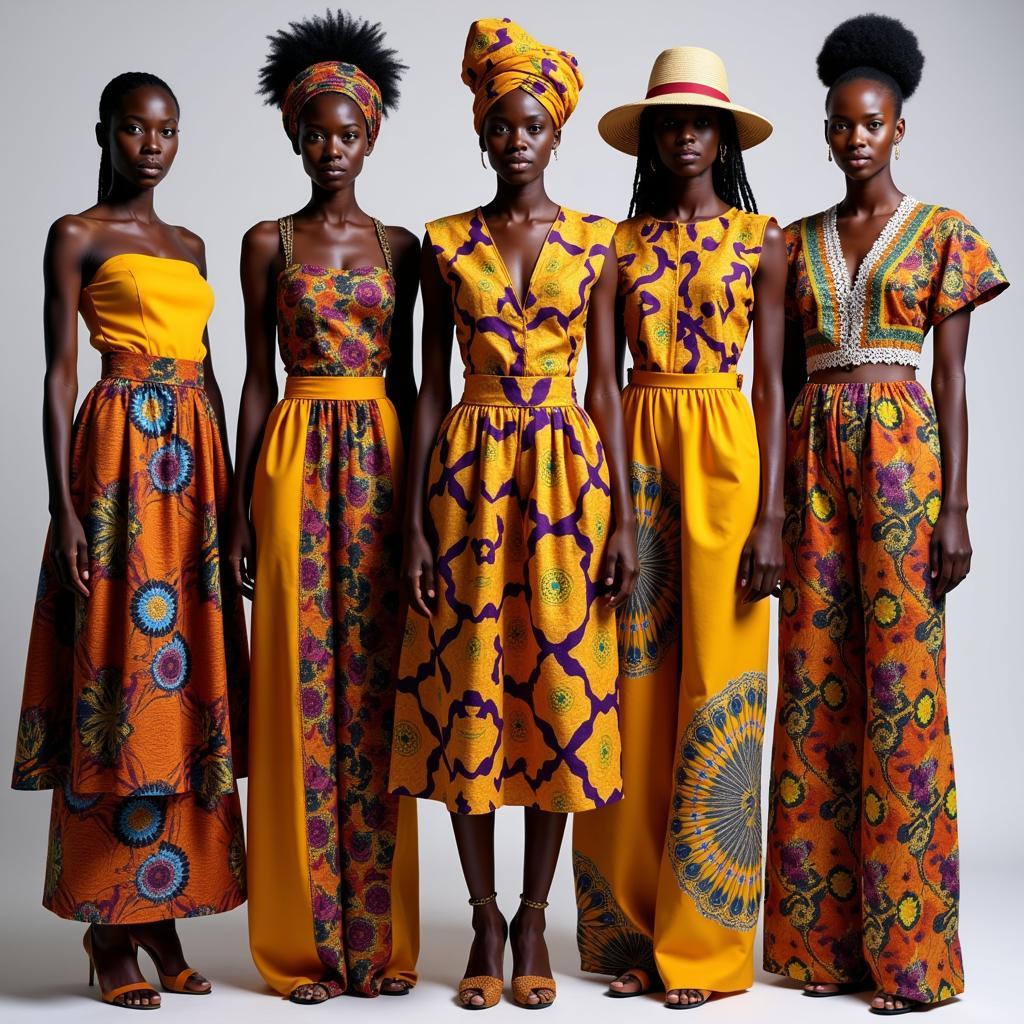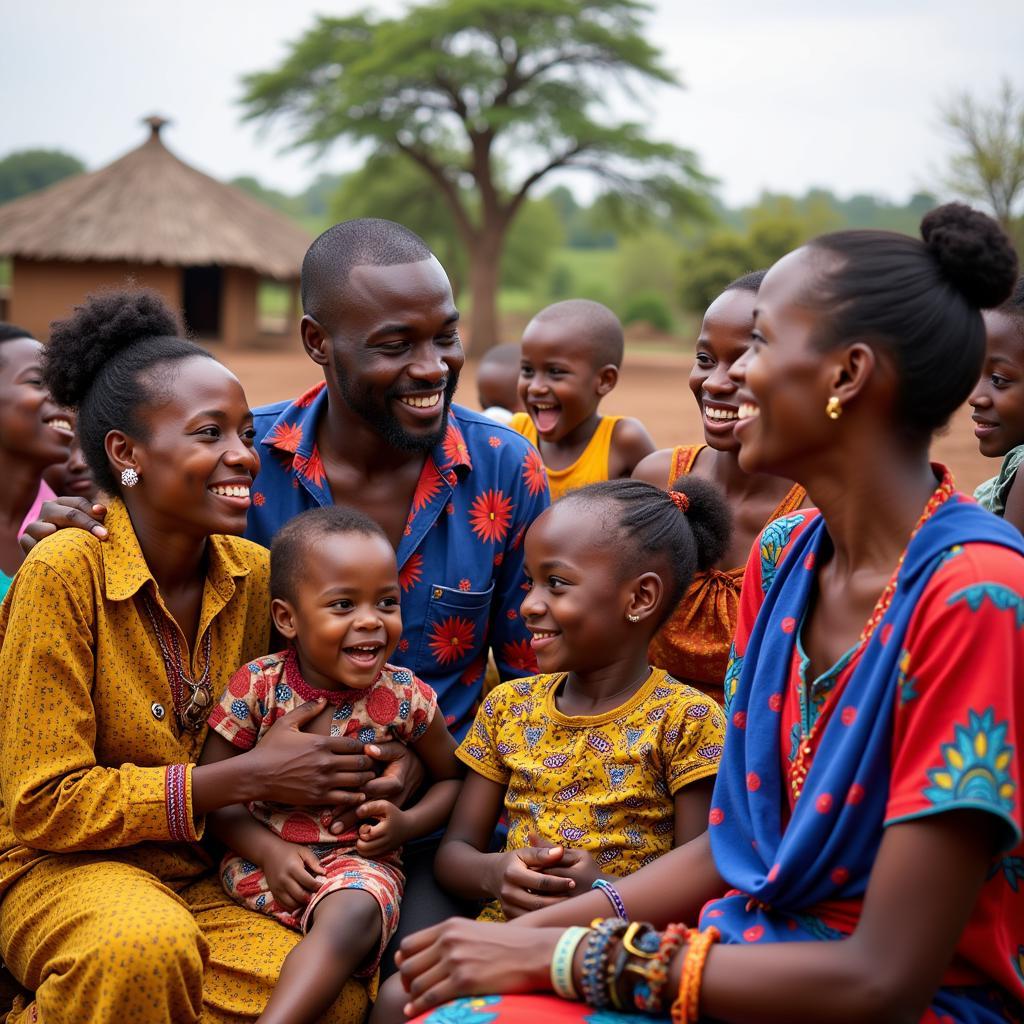A Colorful Journey Through African Costume History
African Costume History is a vibrant tapestry woven with threads of tradition, innovation, and cultural significance. From the intricate beadwork of the Maasai to the flowing robes of the Tuareg, clothing in Africa has always been more than just fabric; it’s a powerful expression of identity, status, and heritage. This journey through the annals of African fashion will uncover the stories behind the garments, exploring their evolution and impact.
Unveiling the Rich History of African Costumes
Exploring the history of African costumes reveals a complex interplay of factors that have shaped their evolution. Climate, readily available resources, and cultural beliefs have all contributed to the unique and diverse styles we see across the continent. For example, in the arid regions of North Africa, loose-fitting garments like the djellaba and gandoura provide protection from the sun and sand, while in West Africa, brightly colored fabrics and elaborate patterns celebrate the region’s rich artistic heritage. Early forms of African attire often utilized natural materials like animal hides, raffia, and bark cloth. As trade routes developed and new materials became available, so too did the styles evolve, incorporating silks, cotton, and other imported textiles.
These early garments weren’t just about practicality; they were imbued with symbolism. Colors, patterns, and embellishments held significant meaning, often relating to social status, age, or marital status. The very act of dressing became a ritual, a way of connecting with one’s ancestors and expressing one’s place within the community. For instance, certain headdresses signified leadership roles, while specific patterns on cloth might denote clan affiliation. These intricate details offer valuable insights into the rich cultural heritage of diverse African communities. You can find more about African headdresses here.
The Influence of Trade and Colonization on African Dress
The arrival of traders and colonizers in Africa brought significant changes to the landscape of African costume. European textiles and fashions began to influence local styles, leading to the adoption of new garments and the adaptation of existing ones. While this exchange sometimes resulted in the suppression of traditional dress, it also sparked new forms of creativity and innovation as African designers blended indigenous elements with imported influences. This fusion gave rise to unique hybrid styles that reflected both the changing times and the enduring power of African aesthetic traditions.
However, the impact of colonization wasn’t solely limited to materials and design. The social and political landscape also experienced significant shifts that affected how and what people wore. For instance, Western dress codes were sometimes imposed, leading to a decline in the use of traditional attire in certain contexts. Yet, in many cases, African communities continued to express their cultural identity through clothing, using it as a form of resistance and a means of preserving their heritage. For a broader perspective on the topic, check out more information about African costume.
African Costume in the Modern Era: A Celebration of Heritage and Innovation
Today, African costume continues to evolve, reflecting both the continent’s rich heritage and its dynamic present. Contemporary African designers are drawing inspiration from traditional motifs and techniques, reimagining them for a global audience. These designers are not only preserving cultural heritage but also pushing boundaries and shaping the future of fashion. From vibrant prints and intricate beadwork to contemporary silhouettes and innovative textiles, modern African costume is a testament to the continent’s enduring creativity and its ever-evolving identity.
What are some common misconceptions about African costume?
One common misconception is that African costume is homogenous. In reality, it’s incredibly diverse, reflecting the vast array of cultures and traditions across the continent. Another misconception is that traditional African clothing is static and unchanging. While certain elements remain constant, African fashion is dynamic, constantly adapting to new influences and evolving over time.
How can I learn more about the specific costume traditions of a particular African region or ethnic group?
Excellent resources for learning more about specific African costume traditions include ethnographic museums, academic publications specializing in African studies, and online platforms dedicated to African culture and art.
 Modern African Costume Design
Modern African Costume Design
African dance is often inseparable from costume. Check out some dynamic pictures of African dancing women or learn more about the connection between African dance and music. You can even explore the influence of African dance in different parts of the world, like African dance in Memphis.
Dr. Amadi Okeke, a renowned anthropologist specializing in African textiles and dress, notes, “African costume is a living testament to the continent’s creativity, resilience, and cultural richness. It’s a story that continues to be written with each new generation.”
Professor Folasade Adeyemi, an expert in African art history, adds, “The study of African costume offers a unique window into the complex social, economic, and political forces that have shaped the continent’s history.”
In conclusion, African costume history is a captivating narrative of cultural expression, innovation, and adaptation. From ancient traditions to contemporary designs, the garments of Africa tell stories of identity, resilience, and the enduring power of human creativity. Exploring this rich history provides invaluable insights into the heart of African culture and its vibrant legacy.
FAQ
- What is the significance of color in African costume?
- What are some of the most common materials used in traditional African clothing?
- How has globalization impacted African fashion?
- Are there any ethical considerations when buying African-inspired clothing?
- How can I support African fashion designers?
- What are some examples of traditional African headwear?
- Where can I find authentic African clothing and accessories?
For any further assistance or information, please contact us at Phone: +255768904061, Email: kaka.mag@gmail.com or visit us at Mbarali DC Mawindi, Kangaga, Tanzania. Our customer service team is available 24/7.



